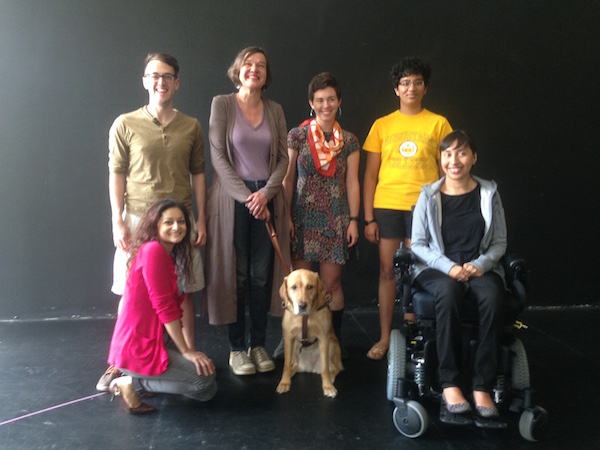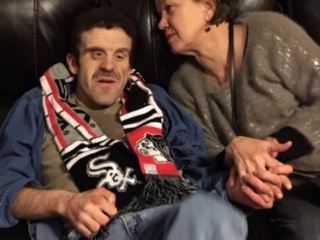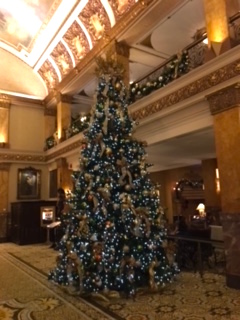Whitney the Seeing Eye dog is a talking head
December 31, 2016 • 6 Comments • Posted in blindness, Seeing Eye dogs, Uncategorized, writingOne challenge I took on in 2016 was acting on stage at Chicago’s Victory Gardens Theater.

Our cast rehearsing my play “Night at the Emerald City Disco” a day before our performance in August, 2016. Photo by Malic White.
Let me explain. I’d attended an accessible performance of Too Much Light put on by the Neo-Futurists early in 2016. Too Much Light cast members write and perform a perpetually rotating list of two-minute plays in 60 minutes, and I found the show exhilarating — and intriguing.
After the success of their special accessible performances in 2016, the Neo-Futurists took things one step further. They used funds from grants they’d received from The Chicago Community Trust and Alphawood Foundation Chicago to team up again with the Victory Gardens Access Project to offer their popular Intro to Too Much Light playwriting program to a tuition-free class that is accessible to performers and writers with and without disabilities. I signed up. In addition to learning about playwriting and performing, I learned a lot about disabilities other than blindness. Half of the people in our class identified as having a disability, and I was the only one who was blind.

My class: (Clockwise – Andrew Lund, Beth Finke, Kathleen Guillion, Rukmini Girish, Michele Lee, Whitney the Seeing Eye Dog, Grishma Shah) Courtesy Neo Futurists.
I enjoy public speaking, but performing on stage did not come naturally. The enthusiasm and laughter I received from teachers and fellow students during class was reassuring, and performing on stage ended up being a lot of fun – especially for Whitney the Seeing Eye dog. She stole the show.
Whitney and I celebrated our premiere over a drink or two with friends immediately after our performance, and I returned home to find a note in my in box from our Neo-Futurist teachers congratulating us for “nailing” it. “The audience left with huge smiles on their faces,” they wrote. I learned to trust those teachers during classtime and rehearsals. I’m choosing to believe what they said about the audience, too!
The note went on. “Your dedication this summer paid off in a big, big way,” it said. “This is the first time Trevor and I have taught an accessible Neo-Futurist class AND it’s the first time we’ve taught a Neo-Futurist class that lasted for as many weeks as ours did. We want to keep doing this!”
And so, like so many other deserving non-profit organizations, the Neo-Futurists produced an end-of-the-year video to show potential donors what they do and why you might want to support them. The only difference about this particular promotional video: theatre star Whitney is in it.
I can assure you that the Neo-Futurists are one non-profit organization that doesn’t spend much of its donor money on overhead — when we showed up to record the video the Neo-Futurarium office was so crowded with staff and desks, and hallways so narrowed by piles of props and stage equipment, that even Superstar Whitney couldn’t weave me through. We had to go sighted guide. The Neo-Futurists are a helpful, creative bunch, though, and we made it safe & sound to the recording studio. I’m told we look good on the video, and just like their remark about our smiling audience back in August, I am choosing to believe what the Neo-Futurists say. Take a look and a listen, and if you are so inclined, please donate to the Neo-Futurists — tell them Whitney sent you.This just in: As part of the Neo-Access initiative, The Neo-Futurists will present a performance of “These 30 Plays” on Sunday, January 22, 2017 at 7 p.m. that includes audio description, Braille programs and a touch tour before the show. For more information, call 773-878-4557 or email admin@neofuturists.org.




